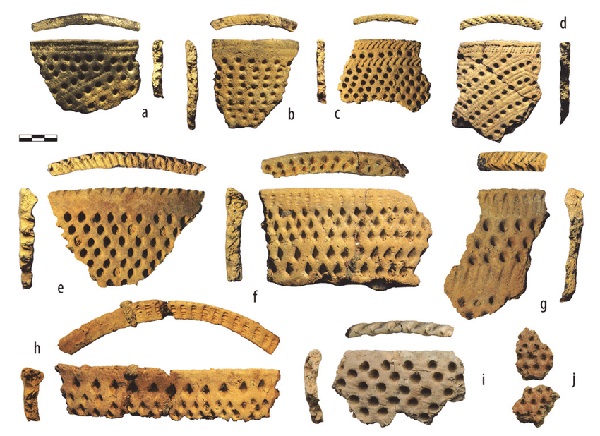Pit-Comb Ware culture
Pit-Comb Ware culture aka Comb Ceramic culture [Культура ямково-гребінцевої кераміки; Kultura iamkovo-hrebintsevoi keramiky]. A Mesolithic and Neolithic archeological culture which existed in northeastern Europe, including the northeastern regions of the Ukrainian Polisia, during the late-5th to 3rd millennium BC. It was first studied in the early 20th century by Vasilii Gorodtsov, Mykhailo Rudynsky, and others. The people of this culture generally settled along river banks or terraces near lakes and lived in semi-subterranean pit houses and later, in above ground dwellings. They have been essentially hunter-gatherers, but certain of their settlements show some evidence of agriculture. The major defining feature of their material culture was slightly oval pottery decorated in the upper portions (and occasionally on the inside near the crown) with bands of pit marks and combed lines. The pottery was usually well-fired and thin-walled. The culture was adept with microlithic and macrolithic flint technology. Studies at sites have revealed a variety of implements, including axes, chisels, cutters, arrowheads, and awls. Several epochs of the culture have been identified. Scholars believe that the Pit-Comb Ware culture may have been a predecessor of the Marianivka culture.
Marko Robert Stech
[This article was updated in 2022.]
.jpg)
